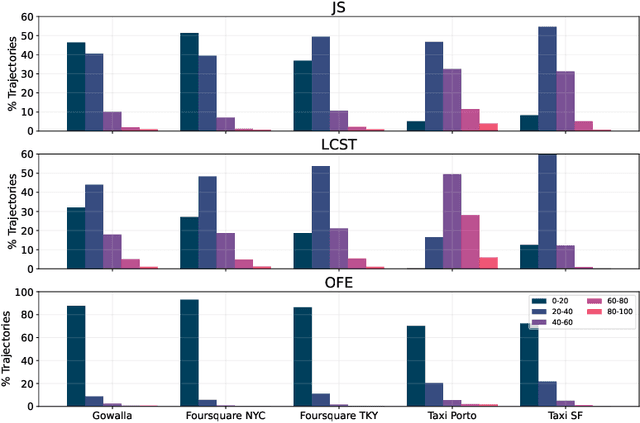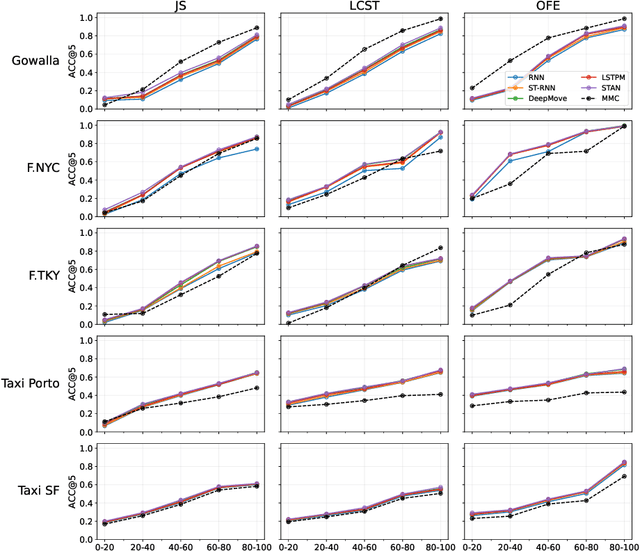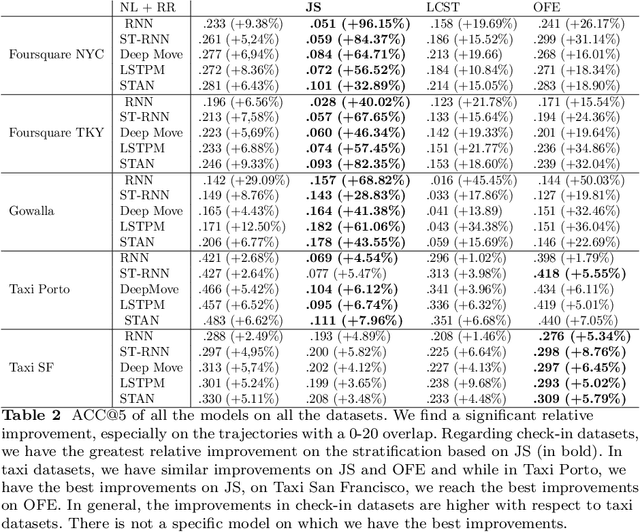Trajectory Test-Train Overlap in Next-Location Prediction Datasets
Paper and Code
Mar 07, 2022



Next-location prediction, consisting of forecasting a user's location given their historical trajectories, has important implications in several fields, such as urban planning, geo-marketing, and disease spreading. Several predictors have been proposed in the last few years to address it, including last-generation ones based on deep learning. This paper tests the generalization capability of these predictors on public mobility datasets, stratifying the datasets by whether the trajectories in the test set also appear fully or partially in the training set. We consistently discover a severe problem of trajectory overlapping in all analyzed datasets, highlighting that predictors memorize trajectories while having limited generalization capacities. We thus propose a methodology to rerank the outputs of the next-location predictors based on spatial mobility patterns. With these techniques, we significantly improve the predictors' generalization capability, with a relative improvement on the accuracy up to 96.15% on the trajectories that cannot be memorized (i.e., low overlap with the training set).
 Add to Chrome
Add to Chrome Add to Firefox
Add to Firefox Add to Edge
Add to Edge